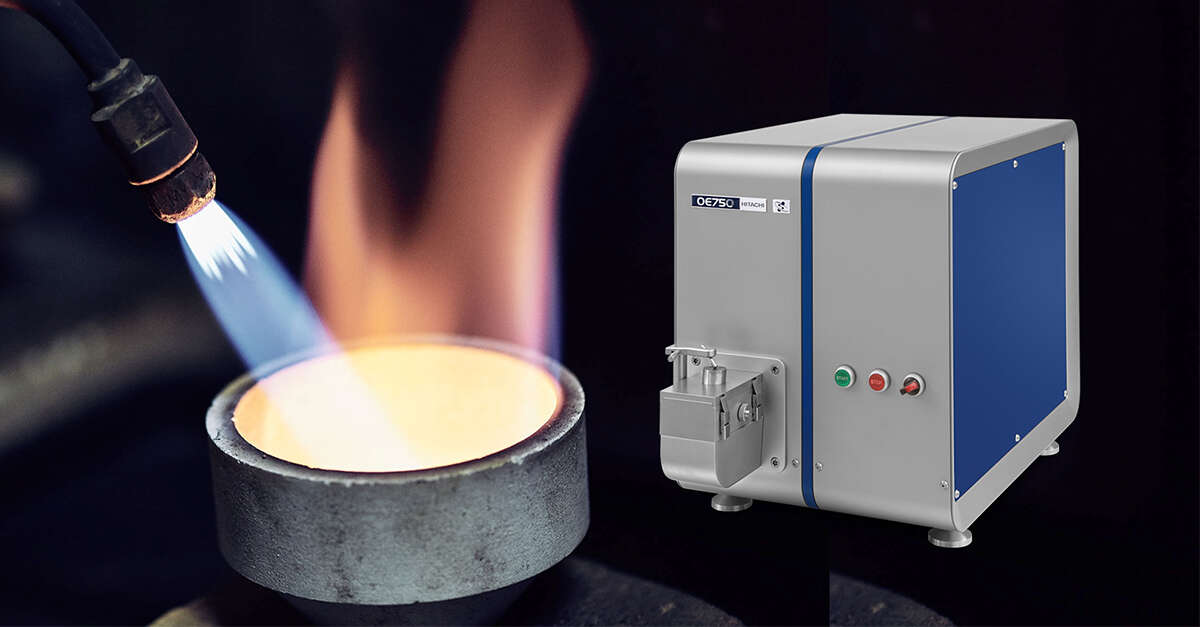The ultra-specialist use of titanium components, such as in the human body and marine environments, means that titanium alloys must meet very exacting specifications. But, the downside of titanium is that it’s tricky to analyze. The emitted spectrum has many lines, and spectrometers can struggle to resolve the individual peaks into meaningful data. For example, the most common titanium alloy is 6Al 4V, which contains 6% aluminum and 4% vanadium. The combination of these elements with titanium results in a huge number of spectral lines. Many mid-range spectrometers simply cannot deliver an accurate and precise reading for this material. And many grades of titanium are specified for the gases hydrogen, oxygen and nitrogen. Again, traditional spectrometers struggle to detect these.

The historical answer for those producing, recycling or trading in titanium alloys has been to use combustion analysis. And if you’re using the standard test methods ASTM E1409 for oxygen and nitrogen or ASTM E1447 for hydrogen, then combustion analysis (or inert gas fusion thermal conductivity / infrared detection) gives you the low detection limits and analytical performance you need. But it comes at a price. Combustion analyzers are very expensive when compared with other methods of spectroscopy and taking measurements are relatively costly. The equipment must be used by trained laboratory personnel and sample preparation takes time and expertise.
For those needing to analyze medium to large volumes of samples from melts or scrap, or to verify semi- or finished products, the development of the new OE750 spark spectrometer by Hitachi High-Tech means a new, extremely cost-effective method of titanium analysis is now within reach.
A complete new optical system means that the OE750 can measure wavelengths from 119 to 766nm with excellent resolution. It can measure oxygen, nitrogen and hydrogen in titanium alloys, and has ultra-low detection limits for many other elements, including silicon, palladium and ruthenium.
Detection limits for OE750 for titanium alloys
| Al | N | O | H | Si | Pd | Ru | V | |
| Limit of detection (ppm) | 5 | 15 | 100 | 5 | 10 | 30 | 10 | 10 |
| Concentration range (%) | 0.0005 - 9 | 0.0015 - 0.03 | 0.01 - 0.4 | 0.0005 - 0.015 | 0.001 - 1 | 0.003 - 0.2 | 0.001 - 0.2 | 0.001 - 18 |
So, given that the OE750 is a viable alternative to combustion analysis in terms of performance, how does it compare in cost?
Watch our video where we explain, using an example of 20,000 samples, how you can potentially save up to $167,000 (149,000 Euros) per year. Allowing you to keep your combustion analyzer as the reference for the first samples of a batch and then deploy the OE750 as your workhorse for follow up measurements.
The video also demonstrates the impressive precision and accuracy of the OE750 in analyzing the gases in titanium alloys.
To find out more about how the OE750 can help reduce costs with titanium analysis, watch the video.
Get in touch Find out more